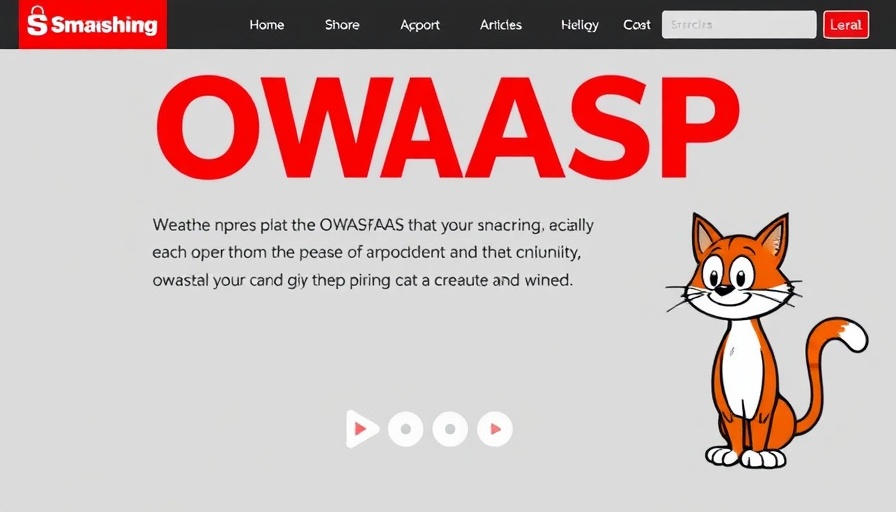
Understanding the Importance of OWASP in Securing Web Applications
Web application security is increasingly vital as technology continues to evolve, with full-stack applications becoming prevalent. One organization at the forefront of enhancing this security is the Open Worldwide Application Security Project (OWASP). The OWASP Top 10 vulnerabilities list serves as a comprehensive resource, guiding developers in recognizing and addressing the most critical security risks. It provides a clear starting point for developers seeking to fortify their coding practices against malicious attacks.
Navigating Common Vulnerabilities
The OWASP Top 10 highlights prevalent vulnerabilities such as Broken Access Control, where inadequate implementations allow unauthorized users access to sensitive information. Understanding this vulnerability involves recognizing that many exploitations derive from insufficient checks on user permissions. For instance, in a Next.js application, a layout relying solely on cookie-based authentication can be susceptible, underscoring the necessity for thorough access control measures.
Relatedly, Injection Flaws, including SQL injections or cross-site scripting, represent another significant threat. These flaws arise when untrusted data, such as user inputs, is executed within any aspect of the application. Developers must proactively mitigate this risk by ensuring robust sanitization of all data inputs.
How OWASP Guides Developers
By utilizing the OWASP resources, web developers can enhance their understanding of both existing and emerging security threats during application design and implementation. Notably, the focus on proactive measures allows developers to shift their security practices left in the software development lifecycle.
OWASP provides guidance on integrating security within various frameworks, including React and Next.js. For instance, developers can benefit from best practices such as implementing middleware for functions like rate limiting, thereby protecting their applications from brute force attacks. Continuous education on security trends is paramount, as the landscape evolves rapidly.
Future Trends in Application Security
As technology advances, so do the techniques employed by hackers. By remaining informed of future updates to the OWASP Top 10 and adopting proactive security strategies, organizations can better protect their applications from the risks posed by these evolving threats. Regularly reviewing components and dependencies through tools like Dependabot can ensure that any known vulnerabilities are promptly addressed and mitigated.
Conclusion: The Call to Action
Understanding how to leverage the OWASP Top 10 is essential for any developer serious about web application security. By integrating these practices, developers can significantly decrease the likelihood of adverse security incidents, making the web a safer place for both developers and users alike. Stop leaving your applications vulnerable and start implementing OWASP-guided practices today!
 Add Row
Add Row  Add
Add 






Write A Comment